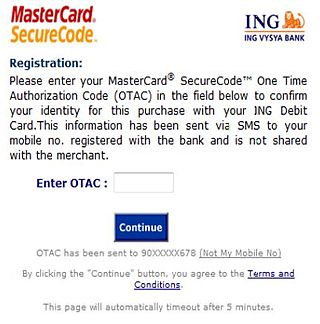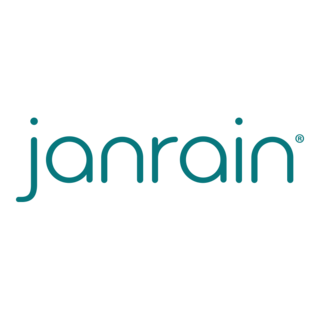Related Research Articles

A captive portal is a web page accessed with a web browser that is displayed to newly connected users of a Wi-Fi or wired network before they are granted broader access to network resources. Captive portals are commonly used to present a landing or log-in page which may require authentication, payment, acceptance of an end-user license agreement, acceptable use policy, survey completion, or other valid credentials that both the host and user agree to adhere by. Captive portals are used for a broad range of mobile and pedestrian broadband services – including cable and commercially provided Wi-Fi and home hotspots. A captive portal can also be used to provide access to enterprise or residential wired networks, such as apartment houses, hotel rooms, and business centers.
Single sign-on (SSO) is an authentication scheme that allows a user to log in with a single ID to any of several related, yet independent, software systems.
Identity management (IdM), also known as identity and access management, is a framework of policies and technologies to ensure that the right users have the appropriate access to technology resources. IdM systems fall under the overarching umbrellas of IT security and data management. Identity and access management systems not only identify, authenticate, and control access for individuals who will be utilizing IT resources but also the hardware and applications employees need to access.

A one-time password (OTP), also known as a one-time PIN, one-time authorization code (OTAC) or dynamic password, is a password that is valid for only one login session or transaction, on a computer system or other digital device. OTPs avoid several shortcomings that are associated with traditional (static) password-based authentication; a number of implementations also incorporate two-factor authentication by ensuring that the one-time password requires access to something a person has as well as something a person knows.
A federated identity in information technology is the means of linking a person's electronic identity and attributes, stored across multiple distinct identity management systems.
Digital identity is the phrase referring to the data that computer systems use to identify individuals, organizations, applications, or devices. For individuals, it involves the collection of personal data that is essential for facilitating automated access to digital services, confirming one's identity on the internet, and allowing digital systems to manage interactions between different parties. It is a component of a person's social identity in the digital realm, often referred to as their online identity.

OpenID is an open standard and decentralized authentication protocol promoted by the non-profit OpenID Foundation. It allows users to be authenticated by co-operating sites using a third-party identity provider (IDP) service, eliminating the need for webmasters to provide their own ad hoc login systems, and allowing users to log in to multiple unrelated websites without having to have a separate identity and password for each. Users create accounts by selecting an OpenID identity provider, and then use those accounts to sign on to any website that accepts OpenID authentication. Several large organizations either issue or accept OpenIDs on their websites.
A Google Account is a user account that is required for access, authentication and authorization to certain online Google services. It is also often used as single sign-on for third party services.
OAuth is an open standard for access delegation, commonly used as a way for internet users to grant websites or applications access to their information on other websites but without giving them the passwords. This mechanism is used by companies such as Amazon, Google, Meta Platforms, Microsoft, and Twitter to permit users to share information about their accounts with third-party applications or websites.
Google Friend Connect was a free social networking site, active from 2008 to 2012. Similar to Facebook Platform and MySpaceID, it allowed users to build a profile to share and update information through messaging, photographs and video content via third-party sites which acted as a host for profile sharing and social exchanges.
An identity provider is a system entity that creates, maintains, and manages identity information for principals and also provides authentication services to relying applications within a federation or distributed network.
Apple ID is a user account by Apple for their devices and software. Apple IDs contain the user's personal data and settings. When an Apple ID is used to log in to an Apple device, the device will automatically use the data and settings associated with the Apple ID.

A Microsoft account or MSA is a single sign-on personal user account for Microsoft customers to log in to consumer Microsoft services, devices running on one of Microsoft's current operating systems, and Microsoft application software.
Mozilla Persona was a decentralized authentication system for the web, based on the open BrowserID protocol prototyped by Mozilla and standardized by IETF. It was launched in July 2011, but after failing to achieve traction, Mozilla announced in January 2016 plans to decommission the service by the end of the year.
Google APIs are application programming interfaces (APIs) developed by Google which allow communication with Google Services and their integration to other services. Examples of these include Search, Gmail, Translate or Google Maps. Third-party apps can use these APIs to take advantage of or extend the functionality of the existing services.
SQRL or Secure, Quick, Reliable Login is a draft open standard for secure website login and authentication. The software typically uses a link of the scheme sqrl:// or optionally a QR code, where a user identifies via a pseudonymous zero-knowledge proof rather than providing a user ID and password. This method is thought to be impervious to a brute-force password attack or data breach. It shifts the burden of security away from the party requesting the authentication and closer to the operating-system implementation of what is possible on the hardware, as well as to the user. SQRL was proposed by Steve Gibson of Gibson Research Corporation in October 2013 as a way to simplify the process of authentication without the risk of revelation of information about the transaction to a third party.

Janrain, sometimes styled as JanRain, is a customer profile and identity management (CIAM) software provider based in Portland, Oregon, United States. It was established in 2002. Akamai acquired Janrain in January 2019.
Digital identity is used in Australia by residents to validate who they are over digital media, such as over the Internet.
Sign in with Apple is a single sign-on provider operated by Apple Inc., introduced on June 3, 2019, at Apple's 2019 Worldwide Developers Conference (WWDC) in iOS 13.
References
- ↑ Social Login: A Data Capture Game Changer(accessed 21 December 2011).
- ↑ Ngemera, Eusebius (2017-01-31). "Social Logins—what info you give away!". eusebius.tech. Retrieved 2017-05-06.
- ↑ "Integrate Social Networks with your Corporate Website with Social Sign On" - Altimeter Group, September 27, 2010
- ↑ Social Media Marketing: Social login or traditional website registration? MarketingSherpa, January 12, 2012
- ↑ "The Social Web's Big New Theme for 2011: Multiple Identities for Everyone" - AllThingsD, January 1, 2011
- ↑ Laurenson, Lydia (3 May 2014). "The Censorship Effect". TechCrunch. Retrieved 27 February 2015.
- ↑ Safruti, Ido (18 October 2017). "Simple Social Login for Users and Attackers". infosecurity. Retrieved 14 November 2017.
- ↑ List of Social Login Providers, Janrain
- ↑ Rui Wang; Shuo Chen & XiaoFeng Wang (May 2012). "Signing Me onto Your Accounts through Facebook and Google: a Traffic-Guided Security Study of Commercially Deployed Single-Sign-On Web Services".
- ↑ "OpenID: Vulnerability report, Data confusion" - OpenID Foundation, March 14, 2012
- ↑ "Social Login Setups – The Good, the Bad and the Ugly" - CloudRail, August 2, 2016